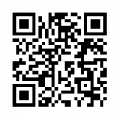Difference between revisions of "Kity Table Saw"
m |
m |
||
| Line 5: | Line 5: | ||
<gallery> | <gallery> | ||
File:Kity-cross-cut.png|Crosscut sled | File:Kity-cross-cut.png|Crosscut sled | ||
| + | File:Qrcode.31760444.png | ||
</gallery> | </gallery> | ||
Revision as of 09:51, 14 October 2015
TODO: pictures, English manual
- Model: Kity Série 8 819
- Datasheet (in Deutsch): File:Kib 819.pdf
- HSE information sheet: File:Wis16.pdf
Overview
The table saw is arguably the most dangerous power tool in the workshop.
Induction on the table saw?
Whether or not we end up with a proper induction syllabus, there are a whole bunch of things we want our members to know when using this tool. Maybe we want them to demonstrate their competence. Maybe we want them to think seriously about the tools provided.
Induction needn’t be long-winded or exhaustive but should be appropriate to the particular user - they may need teaching how to use the saw from scratch!
How do I assess if somebody is competent to work with a particular tool. “Do I trust this person to do x,y,z safely?” I’d like the opportunity to just chat and ask them questions.
What about people that have used the same/similar tools for years? Same/similar tool? This exact model? Do you know the caveats with this particular unit we have?
Signage ideas
Standard sign: “This machine requires and induction before use” QRCode and human-readable link to point people straight to the wiki page for the TableSaw tool induction information.
And this sign should be on everything! STOP! Do not use this tool unless you are going to clean up after yourself.
Safety induction ideas
“Compulsory” videos to watch - we could even watch them with the members and raise some discussion points. I have 2 videos that would be a good grounding: - Dan Gelbart, Building Prototypes part 2 of 18 Safety: https://www.youtube.com/watch?v=1H9ei8-6tEM Jimmy DiResta Table Saw Tips: https://youtu.be/UKWIZM9aI5Y The New Yankee Workshop Table Saw 101 is ideal but not freely available on YouTube NB: not all these tips are suitable for our tools - if in doubt, ask!
IMPORTANT RULES FOR USE
- Do not assume that the previous user has left the tablesaw in a safe and well-adjusted condition
- Use the dust extraction
- Check that the floor is free of loose sawdust and debris
- Use eye and ear protection
- Learn how to make adjustments on this model before you start work
- Know where to stand to avoid trouble
- Understand the causes of binding and kickback
- Never use the rip fence as a guide for cutting wood to length. The offcut piece is likely to become trapped between the fence and the saw blade and pose a serious kickback hazard.
- Shut down the machine for all adjustments and cleaning
- Especially avoid leaning or reaching over the moving blade
- Always use the push sticks provided (or make your own)
- Shut down the machine before retrieving work and offcuts from the outfeed table or use a pushstick to move a piece into a safe position to reach
- If in doubt, ask!
Don’t remove the guard
- if you think you need to remove the guard then you are probably using the wrong tool or using the tool wrong
- find another way of doing it
- consider using the router for blind (non-through) cut (avoiding riving knife/guard)
- a temporary guard or jig can be constructed
- consider using the deep bandsaw for tall cuts (max. 104mm) that would foul the guard body of fixings
Cross cutting
Consider using the chop saw (usually the right tool for the job) Never use the long rip fence when crosscutting boards for accurate lengths use a shorter secondary fence or a stop on the sliding carriage
Don’t be a douchebag/contemptible fellow
- Think ahead: do you have time to tidy up? If not then don’t start the job
- Immediately after use, sweep down the machine THEN sweep the floor (and put the dust in the bin!)
- Don’t leave your offcuts or spare materials - take them away and put them in the right place (bin, small blocks area, materials area, home)
Adjustments and alignment
TODO: photos
- blade height wheel (and lock screw) - TODO document the badly worn spindle
- blade angle wheel (and lock screw)
- fence attachment flip - temporary, sacrificial fences
- Sliding carriage lock
- crosscut attachment fitting and removal
- zero-clearance throat plates
- blade replacement

